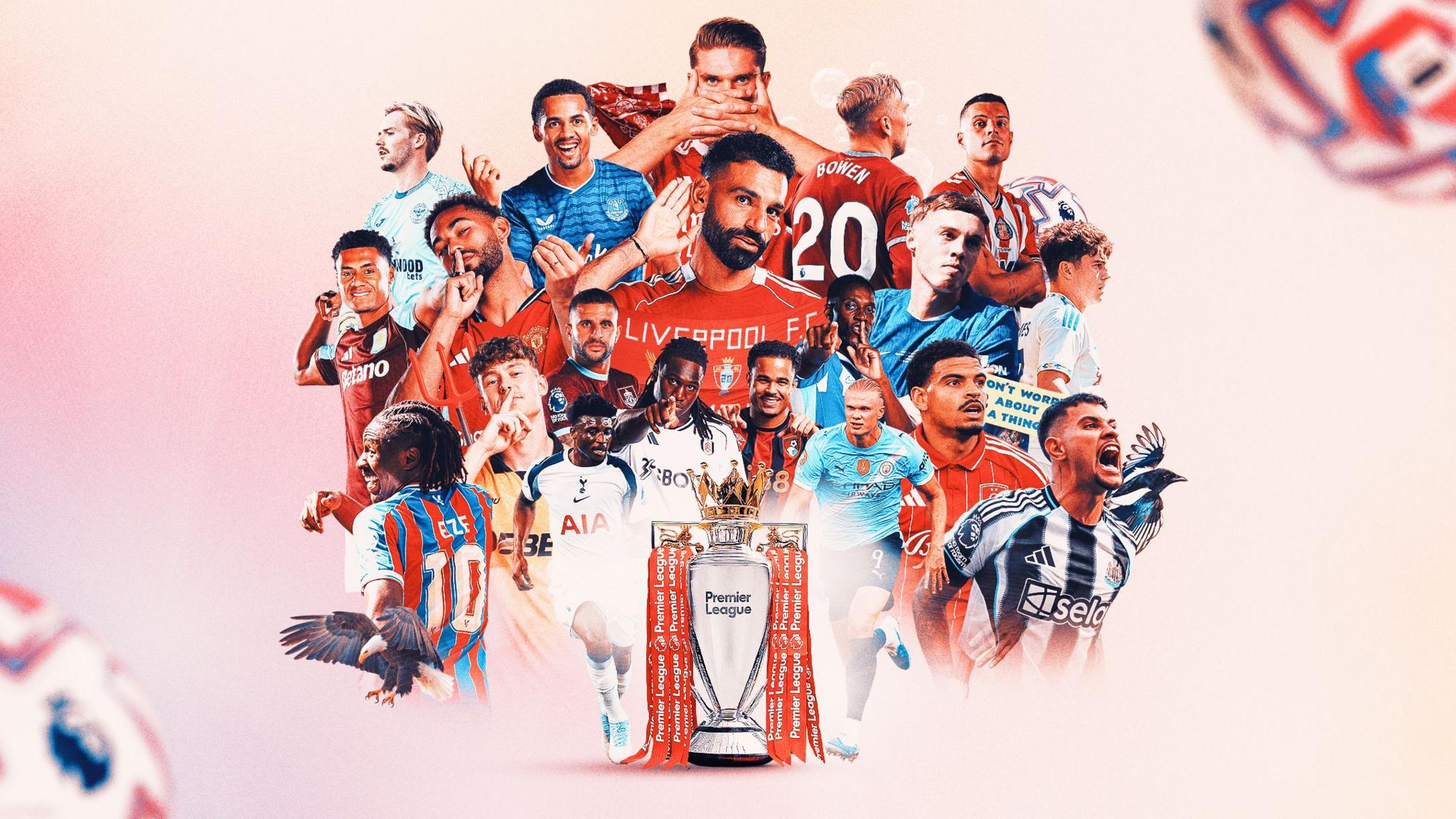What we noticed from the Premier League weekend
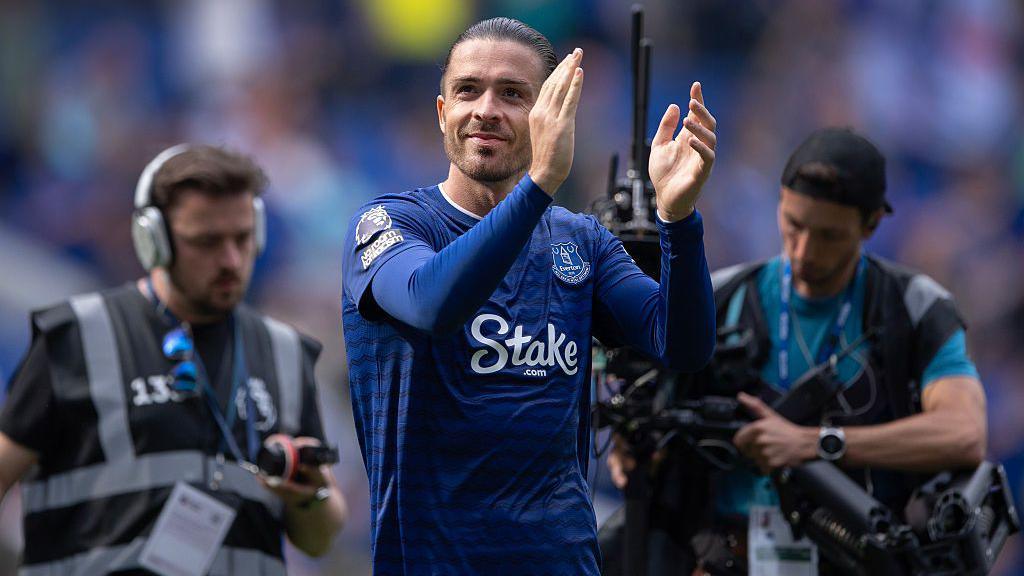
Jack Grealish caught the eye for Everton against Brighton
- Published
The second weekend of the Premier League season showed us a range of interesting tactical tweaks and the clever use of certain players.
Chelsea crushed West Ham, Arsenal thrashed Leeds, Tottenham surprised Manchester City and Manchester United drew with Fulham.
Here are four things we noticed from the weekend's games.
Silva's simple gameplan exploits Amorim's United
'The wrong way round' - Pundits criticise 'dubious' VAR calls
After a competitive Old Trafford tussle against Arsenal, Manchester United put up an underwhelming show at Fulham, one that will have felt familiar to those who watched them last season.
Reflecting on how his team posed United a challenge on Sunday, Fulham boss Marco Silva's comments after the game stood out.
"We know how they defend and we know they like to squeeze from the back five. And if you don't give bodies for them to squeeze from the back five you can create superiority in the middle," he said.
"We know they play two in the middle. We tried to overload with our three plus Alex [Iwobi]. It was as simple as that."
This is telling. We know Ruben Amorim is fairly strict to his team's shape, a 3-4-3 with wing-backs that can also be interpreted as a 5-2-3, only veering away occasionally to a counter-attacking 5-4-1 against dominant opponents.
Against the 5-2-3, Fulham pushed Ryan Sessegnon and Timothy Castagne high to pin back the United wing-backs.
United tried to press high and did this in a shape which left big spaces between their defence, midfield and attack.
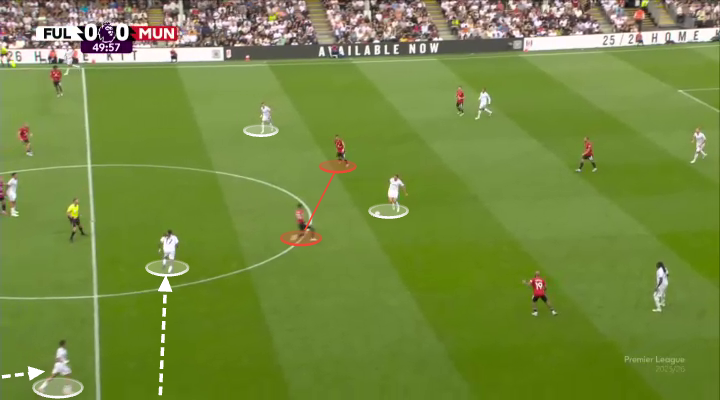
The clever movements of Josh King and Alex Iwobi allowed Fulham's midfield to outnumber United's Bruno Fernandes and Casemiro
Aside from the striker and full-backs, Silva cleverly told his other Fulham attackers not to play on the same line as United's back five and to instead drop deep.
This did two things. Firstly, it meant United's centre-backs had to step up out of their back five if they wanted to apply pressure on Fulham's attacking midfielders. Secondly, it allowed Fulham to have more bodies in midfield around United's two midfielders.
United's centre-backs were reluctant to step out at times which allowed Josh King, Alex Iwobi, Sasa Lukic and Sander Berge to outnumber United's midfield duo. If United's centre-backs did step up, the delay in doing so opened up passing options into the space they vacated.
With Silva's gameplan providing numerical superiority in midfield and exploiting the movements of Leny Yoro and Luke Shaw, it raises concerns for United's current set-up.
If the personnel does not change, we are likely to see other teams following Fulham's approach.
Teething problems for Man Utd's £200m frontline
- Published24 August
Spurs' build-up exploits Man City's high press
Shearer breaks down Spurs 'midfield masterclass'
Pep Guardiola's Manchester City lost their first home outing of the season against Thomas Frank's increasingly impressive Spurs side.
Following the hiring of assistant coach Pep Lijnders, the former second-in-command to Jurgen Klopp at Liverpool, City seem to be focusing heavily on implementing a new version of their high press.
Their defensive line has also been seen trying to catch opponents offside by stepping up at the last moment.
Frank had his own ideas on how to counter City's high pressure and did this by attacking down both flanks.
It is appropriate to focus on how this was done down City's left as this is where Spurs eventually got their first goal.
Spurs' Cristian Romero was often pressed by Erling Haaland and looked to pass it to his right-back, Pedro Porro.
Romero would often appear as if he was looking for a pass into midfield which may have influenced Omar Marmoush's decision not to apply pressure to Porro more closely. Porro also made smart movements deeper to receive the ball from Romero with more time and space.
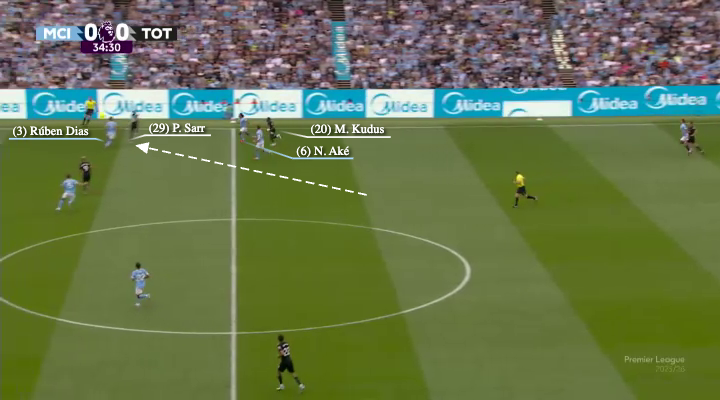
Sarr and Kudus' complementary movement pulled apart Manchester City's defensive shape
Porro's strong passing ability allowed him to launch the ball down the line to Mohammed Kudus, who would drop deep. City's high press meant that their left-back followed Kudus deeper, but Kudus was able to resist this pressure given his strength and ball control.
An important detail was the input of Spurs' midfielders, particularly Pape Matar Sarr, who made willing runs off the ball into the right wing area vacated by Kudus. As Nathan Ake left that area to follow Kudus, it forced Ruben Dias or Nico Gonzalez into unfamiliar areas.
These counter-movements between the Spurs winger and midfielder allowed them to progress down the flanks impressively.
City have had issues defending the left flank in particular, going back to their loss to Al-Hilal in the Club World Cup, so it is worth keeping an eye on how they look to rectify this potential weakness.
'Is Trafford really top drawer?' - Guardiola's keeper conundrum
- Published23 August
Grealish shines playing like Man City Grealish, not Villa Grealish
Grealish thrives on width and 'feeling loved' in new home
Jack Grealish shone for Everton in their impressive win over Brighton, and on the face of things it would be easy to make the assumption that he has reverted back to his Aston Villa ways.
After all, he has moved to a team where he has more of a prominent role lower down the league.
The England international has surpassed his last season's assist tally already by having two in the same game against Brighton, and it is worth noting Everton boss David Moyes used Grealish in a way similar to how Guardiola deployed him at City.
In his brief cameo against Leeds last week, Grealish was collecting the ball in deep positions when both wingers played deeper, and more centrally when the full-backs were to be found in wider areas.
At the weekend against Brighton, both Iliman Ndiaye and Grealish played more traditional wing roles, high up the pitch and wide.
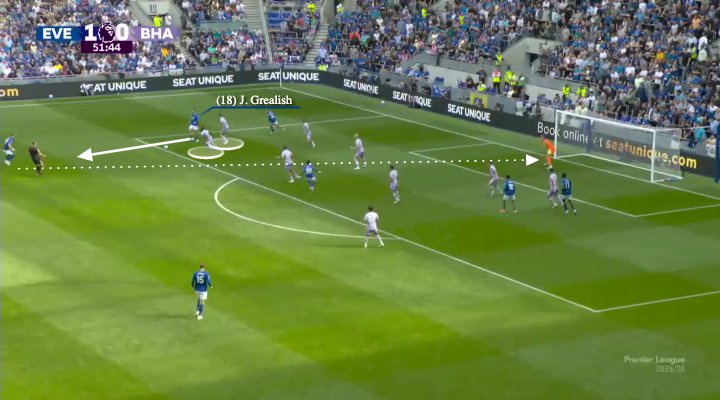
Grealish impressively drew players towards him for the benefit of his team-mates. James Garner scored from the above example
Grealish wasn't played centrally and didn't drop deep to try to carry the ball upfield, like he did in his time at Villa. In fact he lingered out wide as Everton tried to entice Brighton towards the crowded side of the pitch before switching the ball to the far flank where Grealish was able to play one against one.
Some players are so fundamentally impressive and dangerous that opponents crowd around them in greater numbers and Everton's number 18 is one of those.
By getting the ball in space, pushing the opposition back, and drawing multiple players towards him, it freed space for others to exploit.
He was able to smartly lay the ball off for team-mates in the space that was created by his own movements.
As much as there was individual brilliance on the day from Grealish, manager Moyes deserves credit for profiling him in a way that helped to extract that quality.
Everton and Grealish make perfect start at stunning new home
- Published24 August
New pressing scheme and what it means for the league
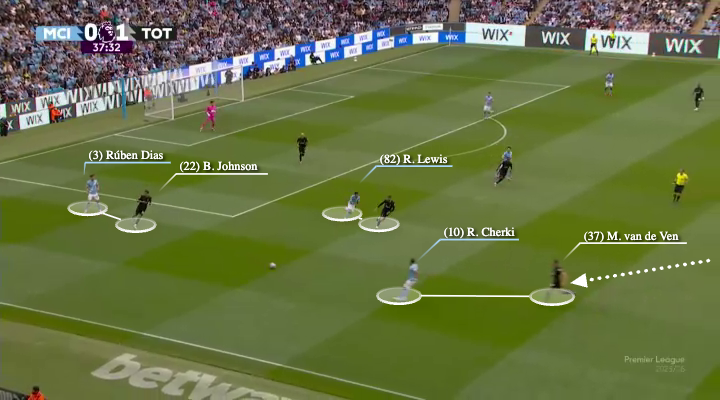
Teams are going to have to be creative in how they protect the wide areas
One thing we have noticed across many games so far this season is a change in how teams are pressing high up the pitch.
If we take the Manchester City versus Spurs game as an example, both teams had a winger pressing one of the centre-backs. We saw Newcastle United's Anthony Elanga do this against Aston Villa last week too.
In this week's example, we could see Tottenham's Brennan Johnson pressing Ruben Dias.
CIty's Rico Lewis moved infield, taking one of the midfielders with him, and Rayan Cherki moved out wide, trying to exploit this space. To ensure Cherki was unable to pick up the ball freely, Micky van de Ven followed him all the way from centre-back.
For City, Oscar Bobb pressed Van de Ven and used Lewis to jump forward to press Spurs left-back Djed Spence. This meant right-back Lewis had to cover lots of distance to get out to the wide areas, in a similar way to Van de Ven.
So what does this mean?
By having wingers pressing central defenders, space might open up out wide. In theory this is less dangerous than having space open up centrally.
But with space opening out wide, one player will typically have increased distances to cover to ensure they get out to the opposition player with their winger instead pressing the centre-back.
Across the season, it will be interesting to see how teams look to attack down the flanks and which player teams use to defend these wide areas, whether that is full-backs like Lewis or central defenders like Van de Ven.
Related topics
- Published17 October
